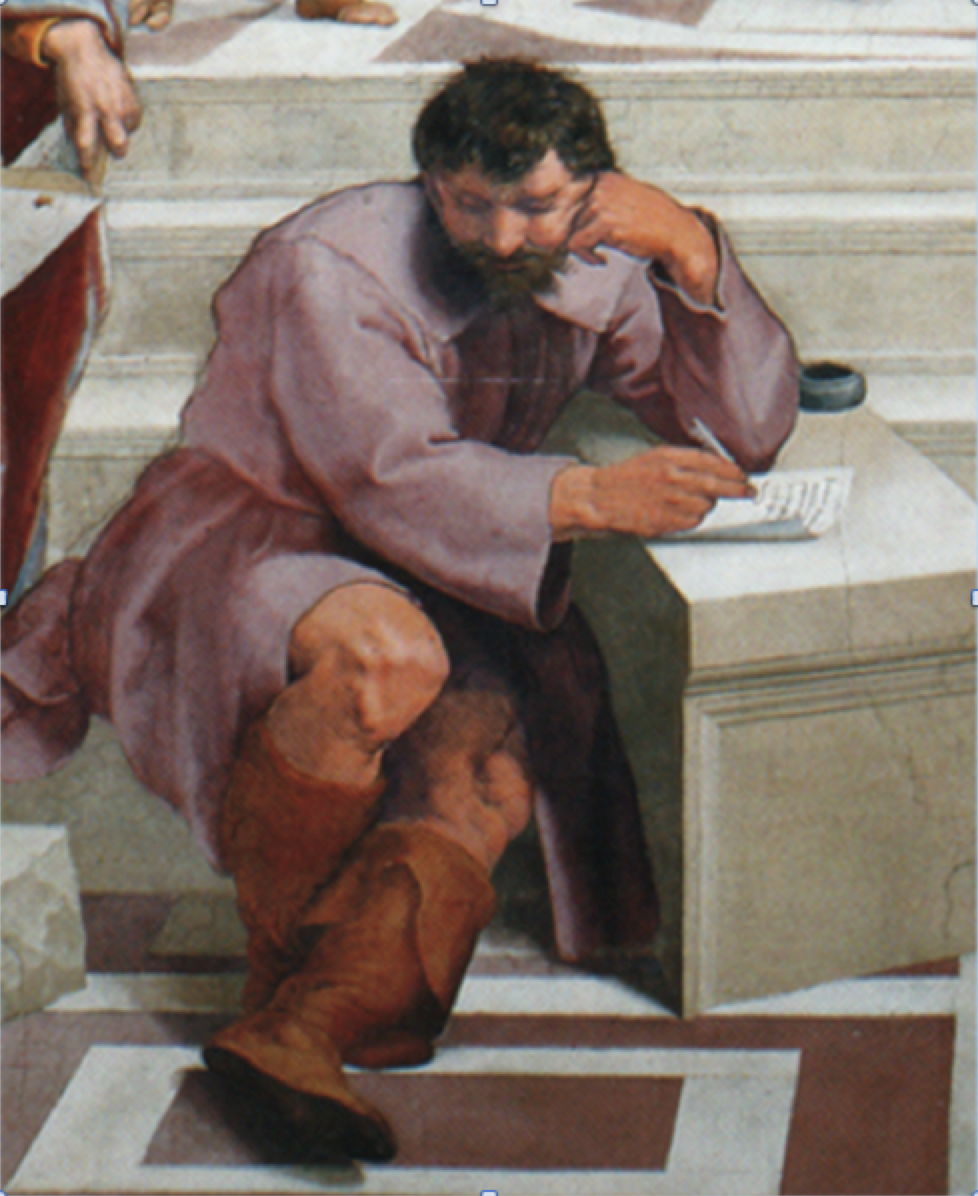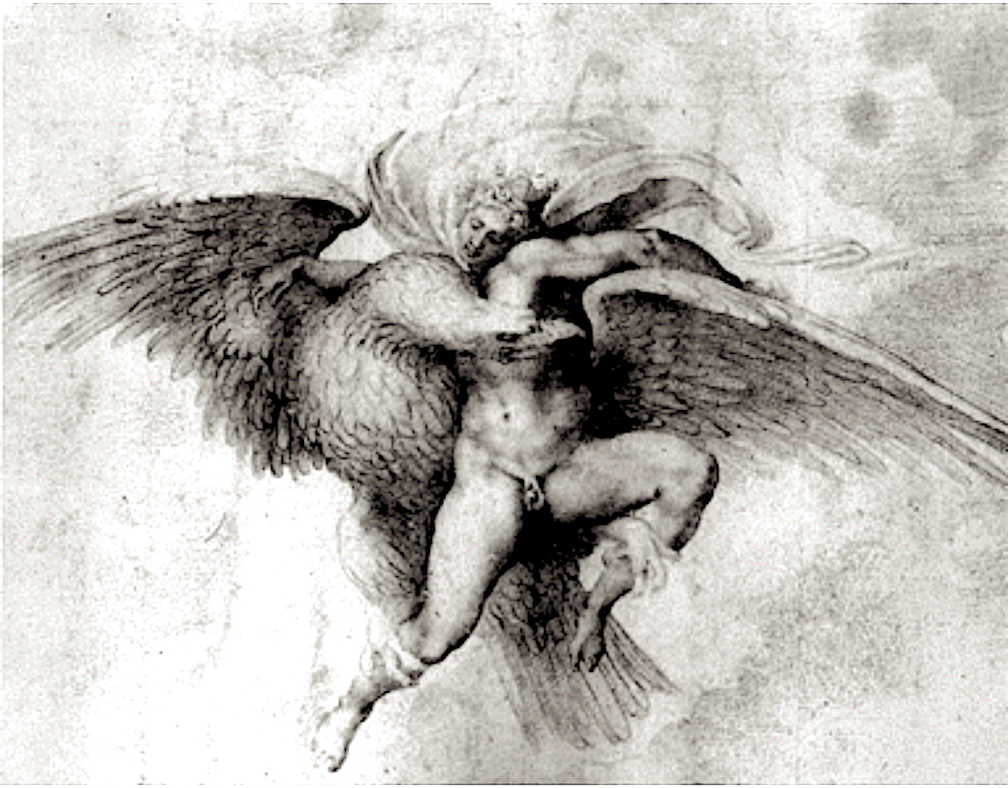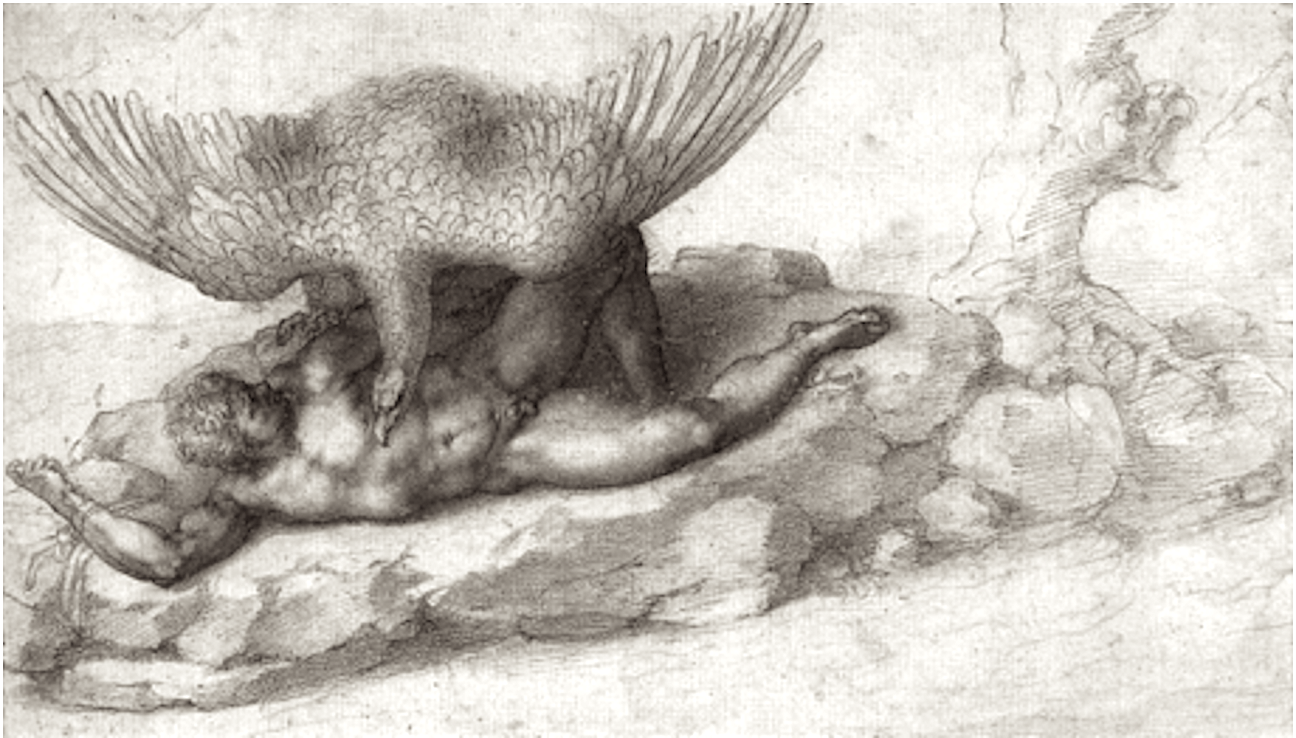Michelangelo's gifts for the beloved Cavalieri
Estratto da un articolo di James Saslow* pubblicato sulla rivista bimestrale The Gay & Lesbian Review (Stati Uniti) del maggio-giugno 2018, liberamente tradotto con ChatGP, rivisto da Innocenzo Pontillo
[...] Between 1532 and 1533, the 57 -year -old Michelangelo delivered six very elaborate designs that illustrated mythological and allegorical topics to the young noble Roman, and lover of art, Thomas de 'Cavalieri, who was the great love of Michelangelo, painter Sculptor and architect with a long but often lonely life.
Shortly after meeting him in Rome, Michelangelo poured his passionate desire on this exceptionally beautiful and intelligent twenty year old, poured both in the visual arts and in the word.
Tommaso flooded with dozens of love poems, often closely related to the theme and images of his designs.
Michelangelo's gifts were a doubly innovative gift (for the time), the so -called "presentation designs" were detailed and refined compositions that the artist gave only to his closest friends. These beautiful and elaborate works transformed the designs into an independent art form, were no longer just US preparatory sketches, but also a means for personal and intimate communication.
The poems (which accompanied them) were also original and very personal: the first substantial body of modern verses addressed by one man to another.
To give voice to this passion Michelangelo had to adapt and subvert the tradition of love poetry between man and woman, embodied by the verses of his literary hero, Francesco Petrarca, to turn to a beloved male.
Taken together, these drawings and these poems are both a more painfully honest confession, and a celebration and an analysis of the intense but contrasting feelings experienced by Michelangelo for the young Knights.
[...] Few today know that Michelangelo was a poet as well as a visual artist, but his contemporaries were well aware of his devotion to the written word. Already in 1510, his bitter rival in the Vatican, the painter Raffaello, depicted him in his fresco "The school of Athens" like Heraclitus, a "dark philosopher" who wrote on a sheet of paper resting on a block of stone (Figure 1 ).
Michelangelo ... In one of his first poems, ... he complained of the discomfort of frescoed the ceiling of the Sistine Chapel, at the same time when Raffaello was painting him in the school of Athens, just at the bottom of the corridor. [...]

[...] Michelangelo wrote to both men and women and gave his designs to both sexes. But the gifts sent to Cavalieri deserve special attention because they are the first example of a love letter between men (which brings together painting and poetry, a first point of reference in the gradual emergence of minority voices, which have flourished completely only in the times Modern.
His images and poems catalog a wide variety of responses to his infatuation for knights, from ecstasy to fear, to concern for the public reputation of the two men.
The first pair of images that sent to his beloved illustrates complementary themes: the positive and negative aspects of love, which can induce both joy and pain, both ecstatic and terror delight from which one cannot defend ourselves.

The positive side of love embodies the beautiful mortal shepherd, Ganimede (figure 2), who captured the loving attention of Jupiter, the bisexual head of the gods.
The first drawing (of which only a copy survives) depicts Jupiter who dives to earth, disguised as an eagle, and who brings the young Ganimedes to heaven for having him like his celestial coppiere and lover.
The negative side of love is represented by the primitive giant Tityus (Figure 3), who tried to rape the Latona goddess, for which he was chained to a rock in the underworld, where a vulture perenly caught the liver. His macabre punishment symbolized the condemnation of uncontrolled or prohibited lust.
Presented to his beloved at the beginning of their relationship, these drawings coupled to the poems announce the tragic ambivalence that Michelangelo suffered throughout his life towards love, towards the earthly beauty that stimulated him towards the created beauty of art. As he admitted with Tommaso in poetry 76:
“This, Lord, happened to me since I saw you: a bitter sweetness, a feeling of yes and no moved me; Certainly your eyes must have been. "
Beyond the admiration of fatal beauty, the deepest messages of Ganimedes' design are revealed in the related poems. Texts and images are strictly intertwined, remembering the complementarity captured in the phrase of the Roman author Orazio, "Ut Picture Poesis": a poem is like a painting, and vice versa, two sides of the same psychic coin itself.

Even if the young man and without beard Ganimede would correspond more strictly by age and appearance to the young Knights, here represents Michelangelo, who passes out in the transcendent grip of divine beauty inspired by Tommaso. In numerous poems, Michelangelo evokes that sense of exaltation, both physical and spiritual, through parallel images of wings and flights upwards, as in his poetry 83:
I see in your beautiful face, my gentleman,
What can hardly be related in this life:
my soul, even if still dressed in his flesh,
He has already raised himself with it towards God.
... every beauty seen here [on earth] resembles ...
To that merciful fountain from which we all derive [that is, to God];
... so he who loves you with faith
He gets up to God.
In other words, Michelangelo not only delighted in Tommaso's physical body, but considered sublime beauty as a reflection of the eternal perfection of God, a edifying taste of heavenly joy.
He imagined love as a scale, on which the lowest steps of earthly beauty can inspire the lover to tend upwards, towards a similar and deeper union with God.
His love for knights is justified and ennobled by this spiritualizing function. In the drawing, we delight in the vision of an ecstatic earthly emotion; In the verses, we understand its divine nuances.
Keep it going…
*James M. Saslow is an emeritus professor of Art History at Queens College, Cuny, New York City (United States)
Original text: Michelangelo's Gifts to Thomas






